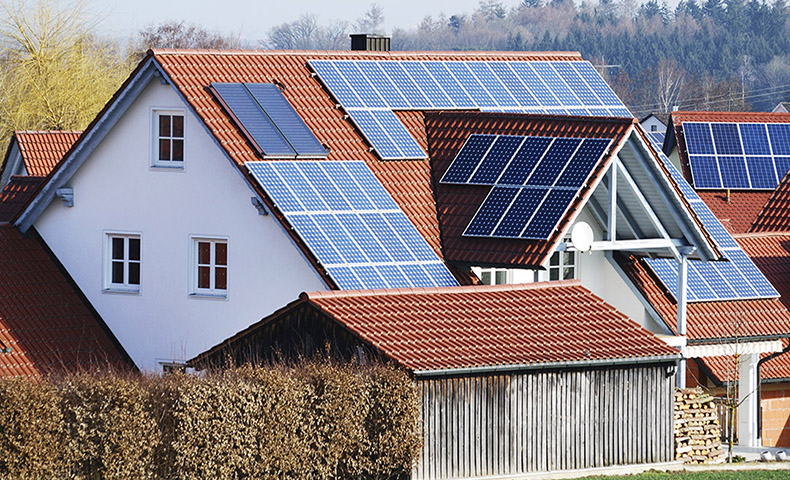
One of the biggest innovation in solar energy is the mounting system. Mounting systems are a vital element of solar arrays, securing panels to the roof or the ground. I’ll review some of the basics of racking and mounting systems.
Ground-mounted solar systems anchor to the ground and hold stacked panels. Typically, two but can be up to four panels high. Two rails support each panel, oriented in landscape or portrait. The anchoring to the ground is the tough part of these installations. If the soil is clear of debris, steel beams are placed in the ground and the racking system is attached to the beams. If ground conditions are aren’t compatible with beams, anchor systems would be used; helical piles, ground screws. These can take more time to install as they have to power through boulders and other large debris.
Ground-mounted systems don’t necessarily always have to go into the ground. Capped landfills are optimal for solar arrays since they’re underused land areas, yet their temperamental ground conditions cannot be disturbed. Arrays can be ballasted on the ground. Concrete blocks hold it in place, and if ground conditions can hold the weight of a concrete truck, cast-in-place blocks may be an easier option for installers.
Solar carports and canopies are tall ground-mounts. They’re common in commercial settings. Reinforced concrete foundations hold steel beams that support solar panels overhead. Carports are equipped with electric vehicle charging stations for a bonus to cars sheltering underneath.
Floatovoltaics is a solar array that floats on water is very popular in Asia and some parts of Europe. Many reservoirs and water treatment facilities benefit from leasing their water surfaces to solar developers. Floating solar arrays still have some characteristics of ground-mounted solar.
They’re made of plastic that link together into a mat and molded into a tilted design to position at a similar degree as systems on a flat roof. They’re assembled on land and placed on the water as more panels are included. The system is either secured to shore mounts or floating anchors.
Your solar array will be affixed to your property using racking and mounting systems. Rooftop solar panel systems will have a fixed mount system, which will keep the panels stationary on your roof. All rooftop mounting systems serve the same functional purpose but can differ on how they’re installed. Most racking is standard “penetrating” rooftop racking, which means there will be holes drilled into your roof to fasten the mounting system. Installers will use sealants at the site of penetration to prevent roof leaks. But, this type of roof mount may not be the best for your property depending on the material of your roof. If you have a metal, clay or Spanish tile roof, installers may recommend racking systems that do not require roof penetration.
With ground-mounted installations, there are also fixed mount systems. Some people may choose to use track mounts, or “trackers,” which will allow the panels in the solar array to follow the sun as it moves across the sky. The downsides of using trackers are that they tend to be expensive upfront and can require more maintenance over time. But, the benefit of installing them is that solar panels mounted on a tracking system will produce more electricity than if they were stationary. Check out more here.
HahaSmart Blog - More Solar Tips and Guide
HahaSmart News - Stay Informed
Your Solar Incentives - See Credits and Incentives in Your Area
Check Your Home's Solar Price - See How Much You Save
Register Now - Unlock The Lowest Solar Prices in Your Area


Input your address to see if it is solar friendly and how much you can save with solar.
Great. Your address is perfect for solar. Solar incentive is still available. Select monthly utility cost and calculate the size of solar system you will need now.
| kw System size | years Payback period | Lifetime savings |
No money down, 100% finance is available.
|
|
Looking for more information on solar? Sign up now and we will find them for you. |
Comments